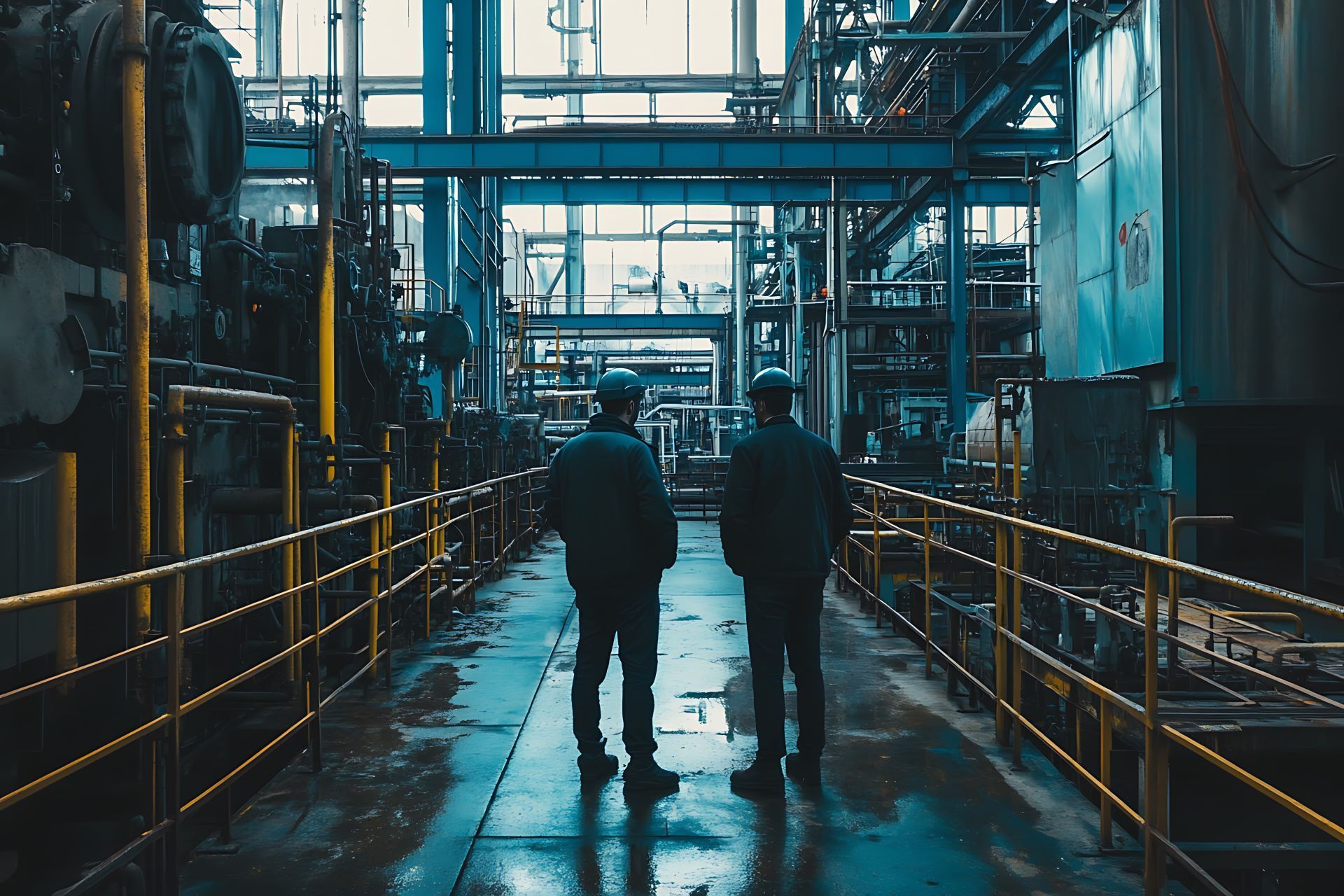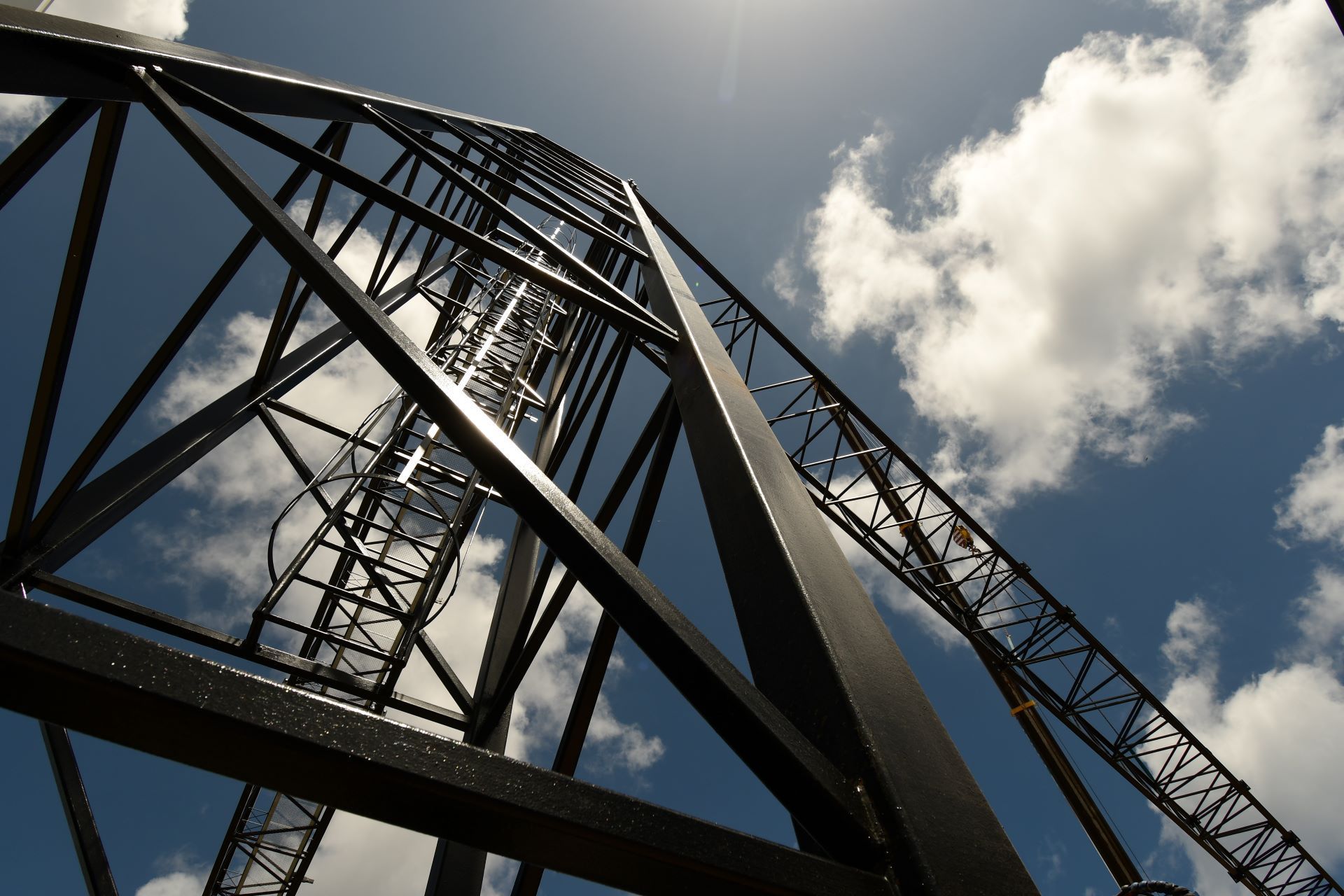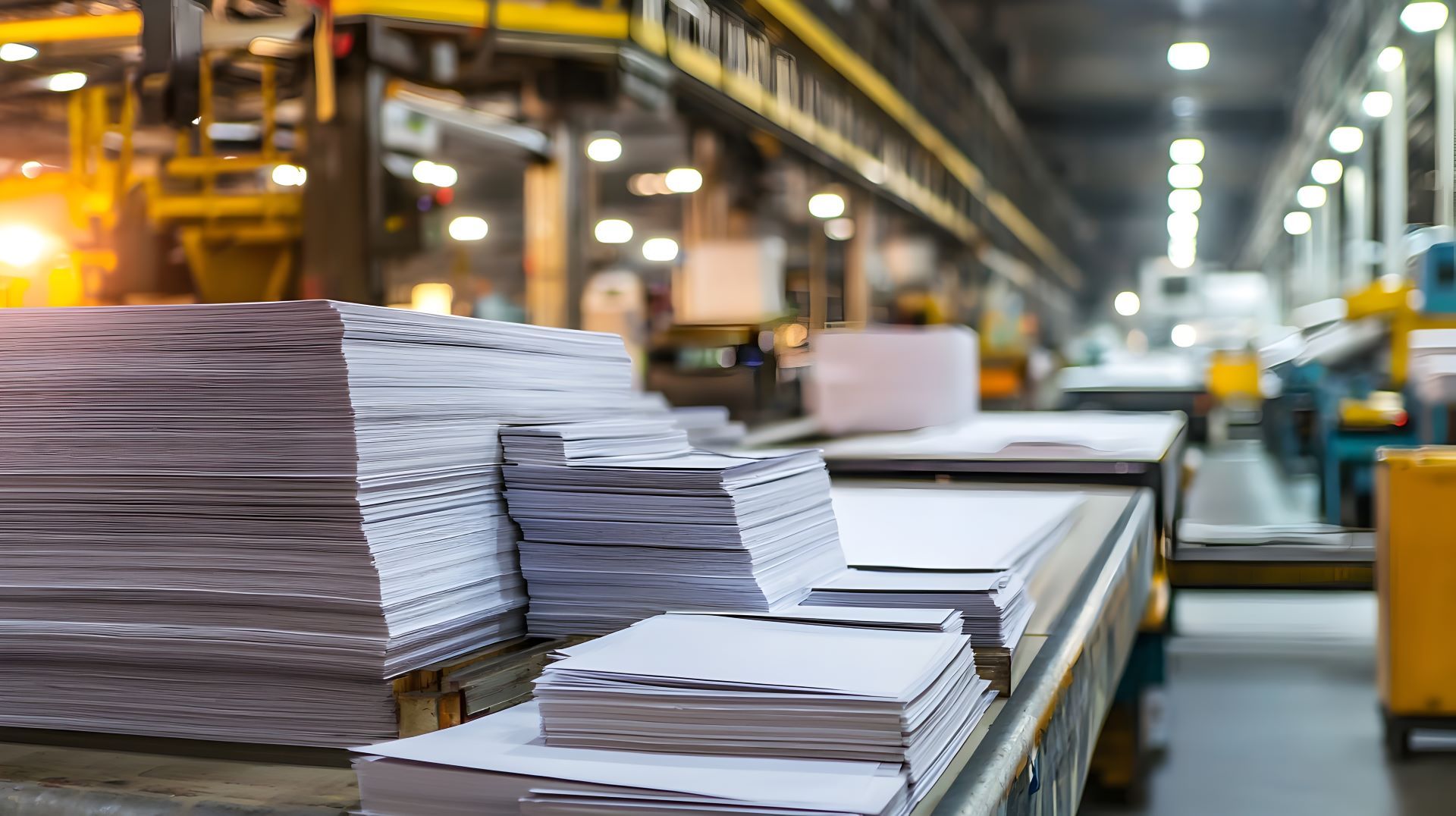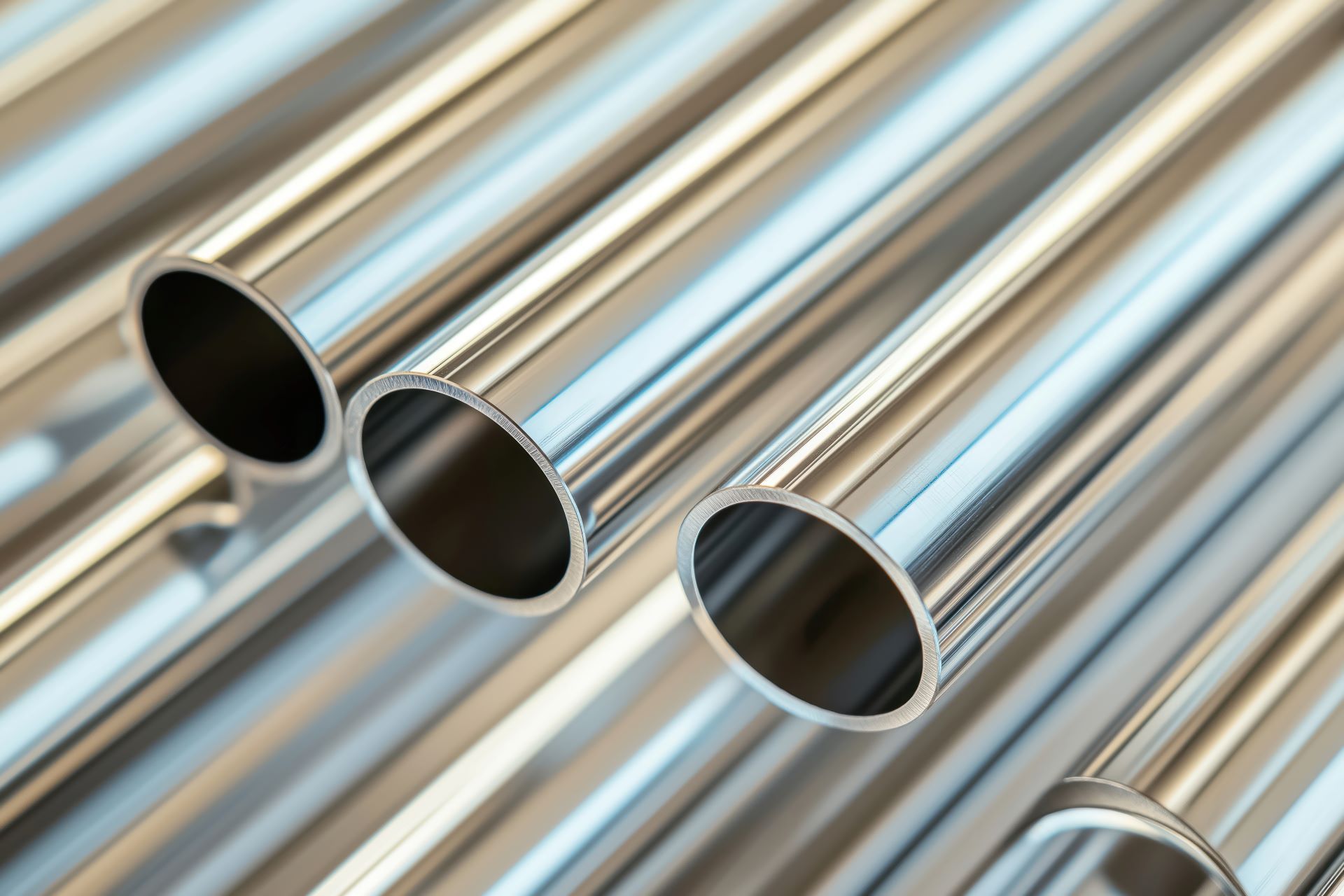Stainless Steel for Biogas & Renewable Energy Systems
As industries push toward cleaner energy, biogas systems and renewable energy infrastructure are becoming central to global sustainability. From waste-to-energy plants to digesters and pipelines, these facilities demand materials that resist corrosion, endure harsh chemical exposure, and support decades of reliable service.
Stainless steel has become the material of choice across this sector, not just for its corrosion resistance, but also for its strength, hygiene, weldability, and long lifecycle performance. In the context of biogas systems, where organic acids, moisture, and bacteria interact continuously, choosing the right stainless alloy is not just beneficial, it’s essential.
At Action Stainless, we provide in-stock stainless steel grades ideal for biogas systems and perform all value-added processing in-house. Our materials meet the strict demands of renewable energy operations with no reliance on third-party finishing or fabrication.
Challenges in Biogas & Renewable Infrastructure
Choosing the right grade is key. Here's how common stainless grades perform in biogas and renewable energy settings:
Biogas systems are built around the principle of anaerobic digestion, the breakdown of organic waste into methane-rich gas. This process involves high moisture, acidic environments, hydrogen sulfide (H₂S), ammonia, and elevated temperatures. Tanks, piping, and structural systems are constantly exposed to microbial, thermal, and chemical stress.
In renewable energy environments, particularly bioenergy and digesters, the material must resist:
- Organic and inorganic acids
- H₂S-induced corrosion
- Chlorides from feedstock
- Temperature fluctuations
- High humidity or moisture contact
- Abrasion from slurry agitation or feedstock mixing
Carbon steel, while inexpensive, cannot survive in this environment without rapid degradation.
Stainless steel, especially molybdenum-enhanced or duplex grades, is engineered to endure these exact conditions.
Why Stainless Steel Is Preferred for Biogas Applications
The strength of stainless steel lies in its combination of chemical resistance and mechanical performance. In biogas infrastructure, this means longer equipment life, reduced downtime, and less maintenance, all of which improve ROI for plant operators and fabricators.
Stainless grades resist:
- Pitting and crevice corrosion in tanks and wet zones
- Cracking from chloride or acid exposure
- Microbial-induced corrosion (MIC)
- Wear and deformation during cleaning or agitation
For above-ground digesters, piping loops, flare lines, or compressors, the right stainless ensures system longevity. At Action Stainless, we support these applications with
304, 316, and 2205 duplex
grades available in
plate, sheet, pipe, tube, and bar, all processed in-house.
Comparing Stainless Steel Grades for Biogas Use
Choosing the right grade is key. Here's how common stainless grades perform in biogas and renewable energy settings:
| Grade | Key Features | Best Used In |
|---|---|---|
| 304 / 304L | General corrosion resistance, economical | Structural frames, dry zones, general tanks |
| 316 / 316L | Molybdenum-added, higher chloride and acid resistance | Digesters, slurry piping, humid zones |
| 2205 Duplex | Superior strength and pitting resistance, low stress crack risk | High-stress digesters, buried piping, tanks |
| 317L | Enhanced molybdenum content for better acid resistance | Fermentation tanks, bio-acid handling |
| 904L | Exceptional in sulfuric environments, rare use | Specialty waste systems, aggressive acids |
For most digesters and midstream biogas infrastructure,
316L and 2205 duplex are the industry standard. They offer the corrosion resistance needed without excessive cost.
Structural and Processing Benefits
In addition to corrosion resistance, stainless steel provides unmatched fabrication flexibility. It can be easily:
- Welded without distortion
- Polished to hygiene standards
- Formed into complex shapes
- Machined into precise fittings
This makes stainless steel a favorite among renewable energy fabricators, who must meet sanitary, environmental, and structural requirements in the same project.
At Action Stainless, we handle this in-house, offering:
- Saw cutting for pipe and bar lengths
- Shearing and plasma cutting for plate and sheet
- Polishing for cleanable surfaces
- In-house packaging to protect materials from contamination during transit
This full-service model ensures that material is project-ready the moment it arrives at your fabrication shop or job site.
Standards & Compliance in Renewable Energy Systems
Facilities involved in waste-to-energy or biogas capture often follow strict mechanical and hygienic codes. These include:
- ASME standards for pressure equipment
- 3-A Sanitary Standards for equipment in contact with organic matter
- API guidelines for piping and corrosion control
- ISO and EPA documentation requirements for green energy systems
Stainless steel must not only perform but be fully traceable and certifiable. That’s why Action Stainless provides mill test reports (MTRs) and supports orders with clear, auditable documentation. This is especially critical for clients pursuing tax credits, state or federal funding, or EPA approval.
Long-Term ROI: Why Fabricators Prefer Stainless
- It eliminates future repairs caused by corrosion or microbial attack
- It reduces the need for interior tank linings or chemical coatings
- It provides a sanitary, easy-to-clean surface for environmental compliance
- It stands up to cleaning cycles, pressure, and vibration without fatigue
Action Stainless offers
consistent inventory, cut-to-spec material, and consultation support to ensure that biogas infrastructure performs for decades, not just for a few years.
Use Cases: Where Stainless Steel Shines in Renewable Energy
Biogas systems aren’t one-size-fits-all. From dairy farms to food waste digesters and municipal wastewater treatment plants, stainless steel plays a role in nearly every subsystem:
- Digesters: Lined with 316L or 2205 to resist microbial acids and agitation abrasion
- Gas Scrubbers & Flare Lines: Require high-strength, corrosion-resistant pipe
- Mixers & Agitators: Use polished stainless to avoid buildup and ease cleaning
- Piping Systems: Need durable, corrosion-resistant tubes for slurry and gas transfer
- Storage Tanks: Built with stainless plate for long-term waste or gas containment
- Compressor Housings: Require fatigue resistance in high-pressure cycles
Whether your system is modular or on-site constructed, Action Stainless offers the grades, forms, and finishes to match the job.
How Action Stainless Supports the Biogas Sector
With demand growing across North America for sustainable infrastructure, fabricators need suppliers who understand the urgency, engineering demands, and processing complexity of these projects.
Action Stainless delivers with:
- Multiple locations for fast regional shipping
- In-house cutting, shearing, and polishing
- Expert material selection assistance
- Dedicated inventory in critical renewable grades
- Custom packaging for on-site delivery protection
Our approach is end-to-end: from material selection through cutting, finishing, packaging, and logistics, we keep everything in-house so that your project stays on spec and on schedule.
Conclusion: Stainless Steel Is Built for Renewable Energy Demands
In biogas and renewable systems, the stakes are high corrosion, chemical attack, and fatigue can shut down production or trigger costly maintenance cycles. Stainless steel offers the strength, resistance, and longevity these systems demand.
More importantly, working with a supplier like Action Stainless ensures that the material shows up cut, certified, and ready to perform backed by decades of experience in stainless distribution and processing.
Whether you're building a new digester, updating a flare line, or fabricating municipal waste recovery systems, we’re here to support your next project with the stainless grades, forms, and finishes that deliver.






